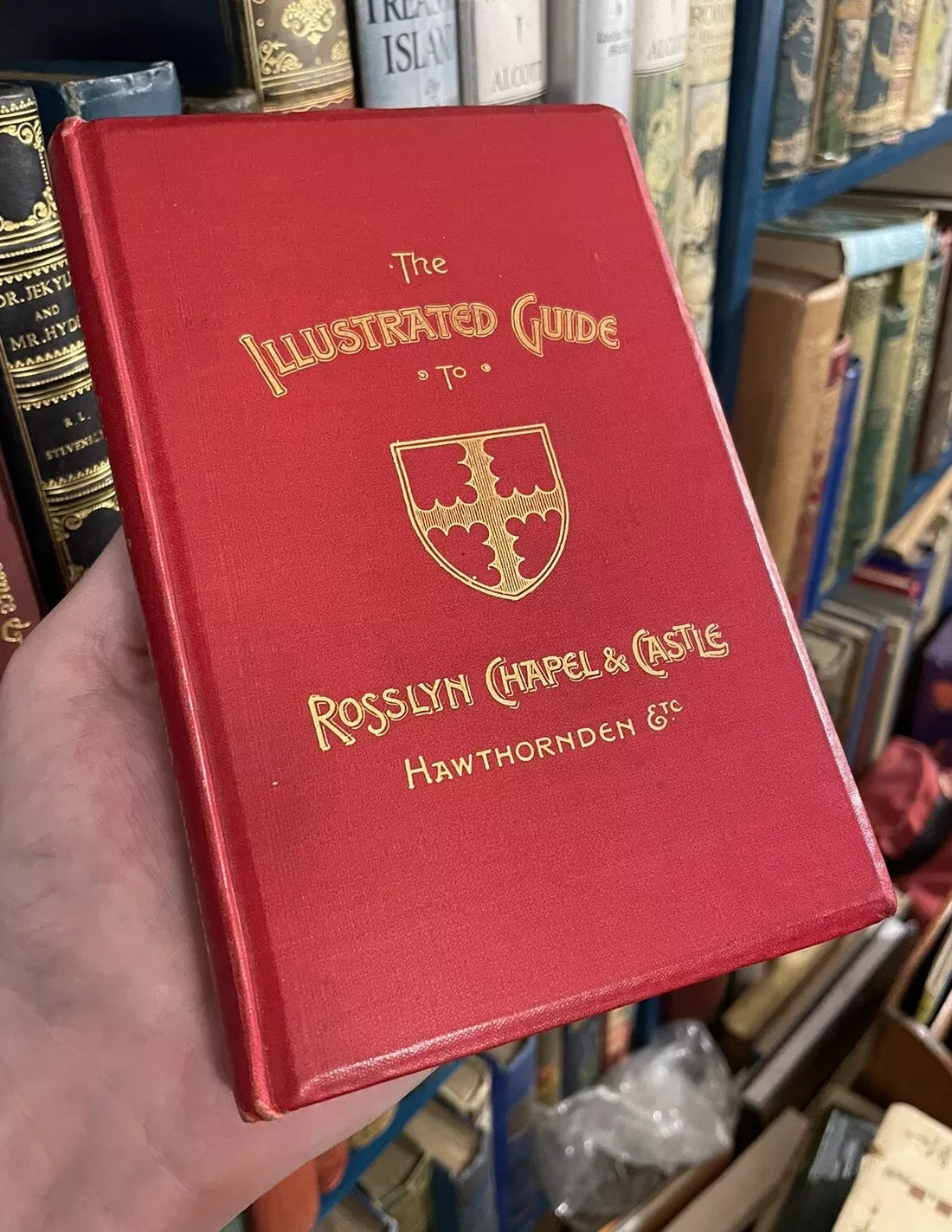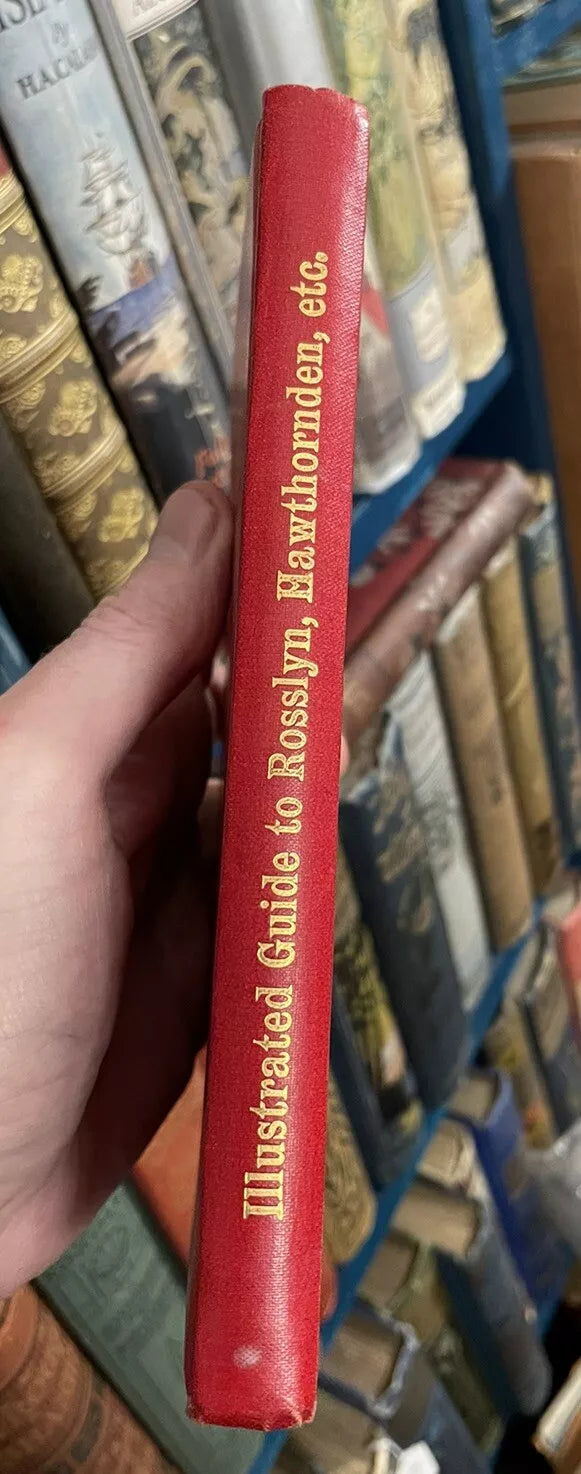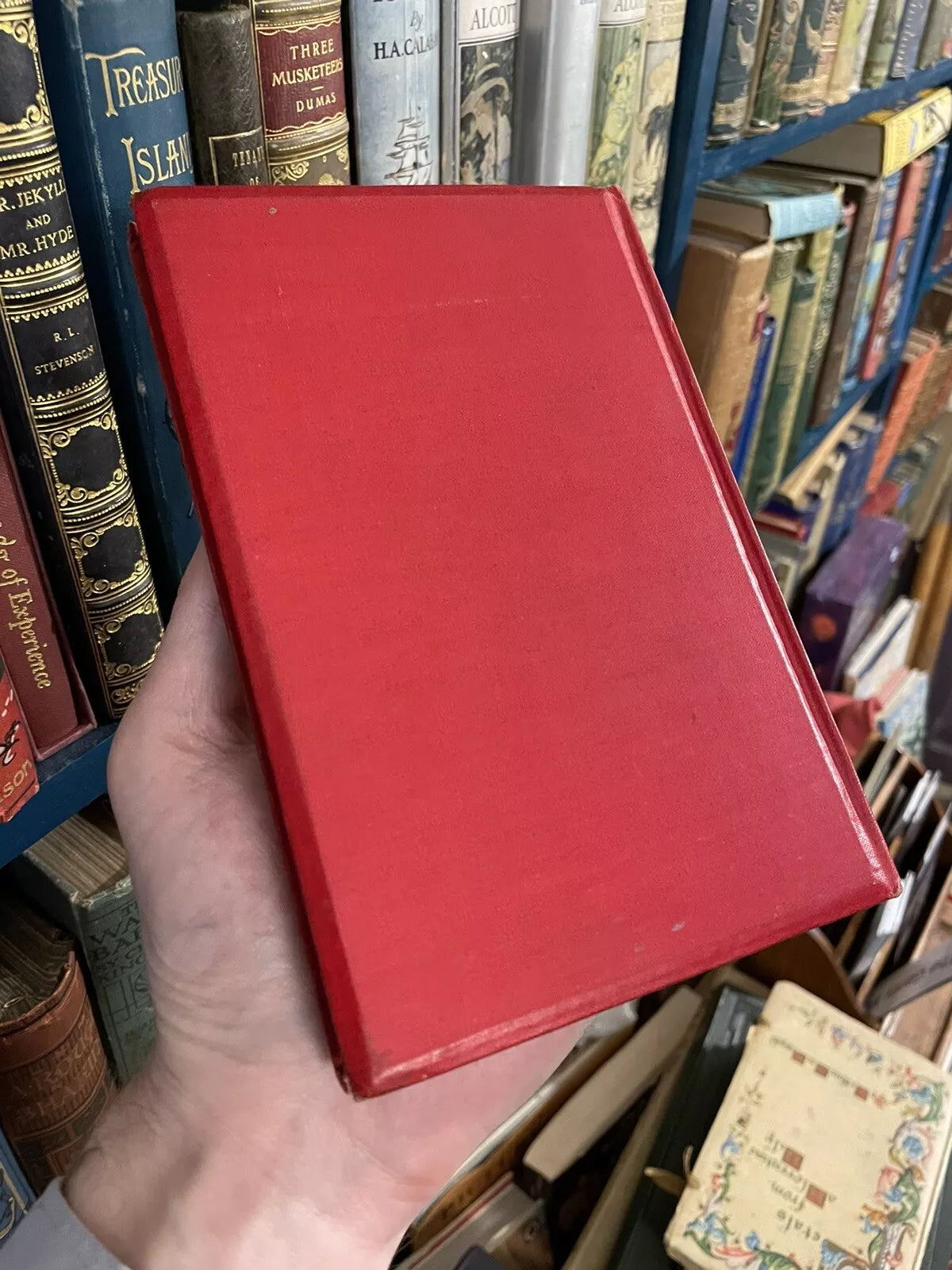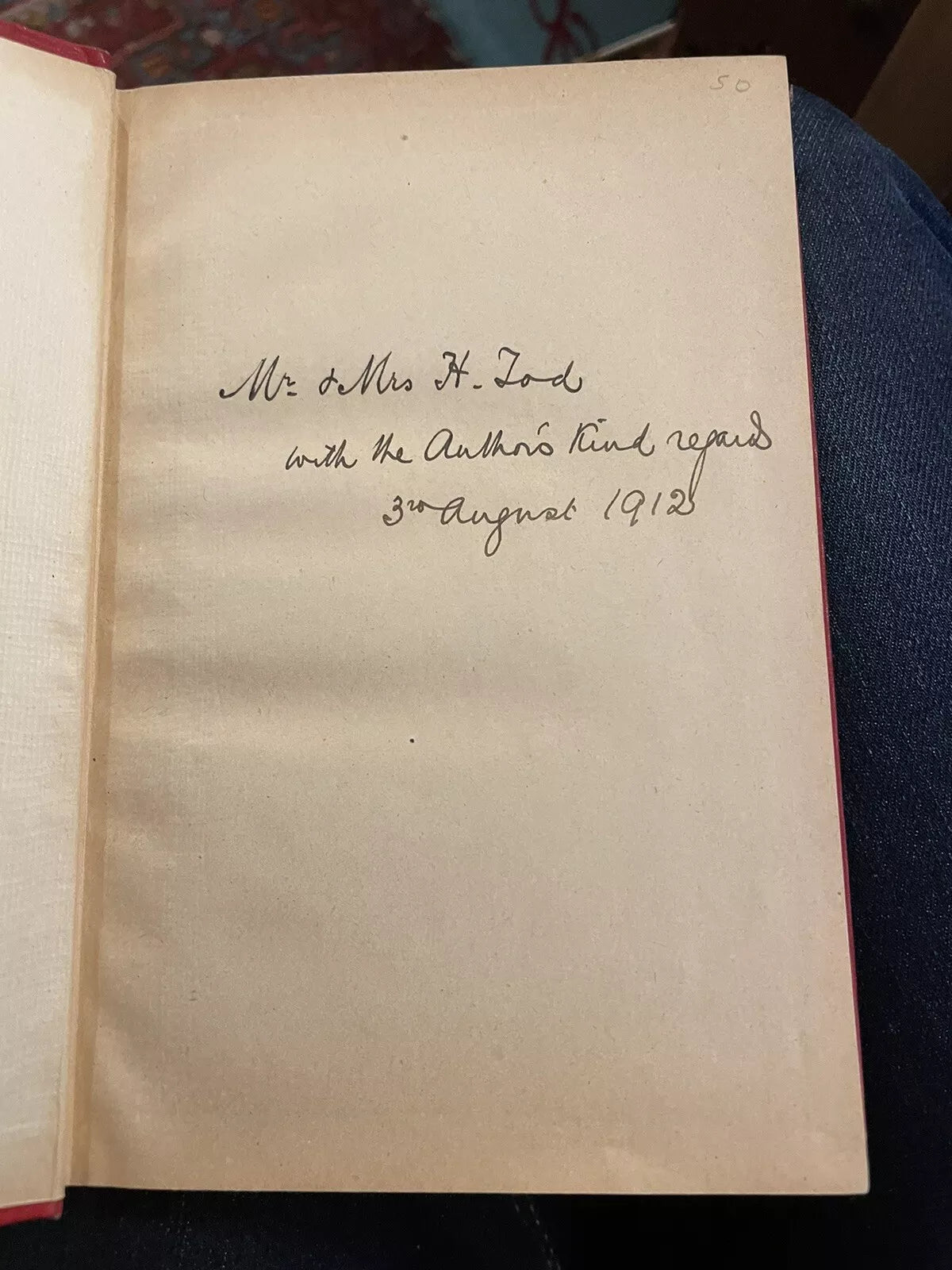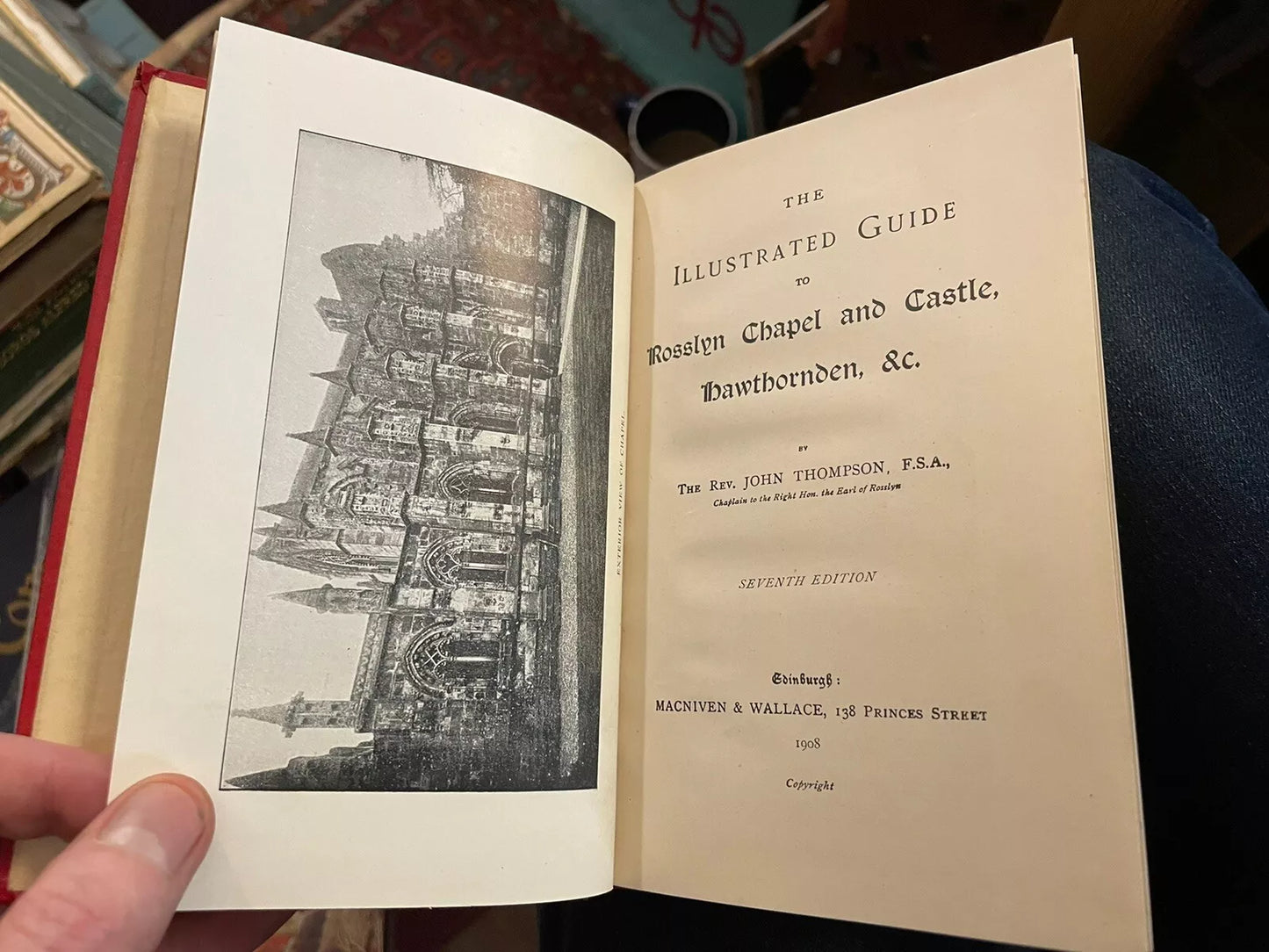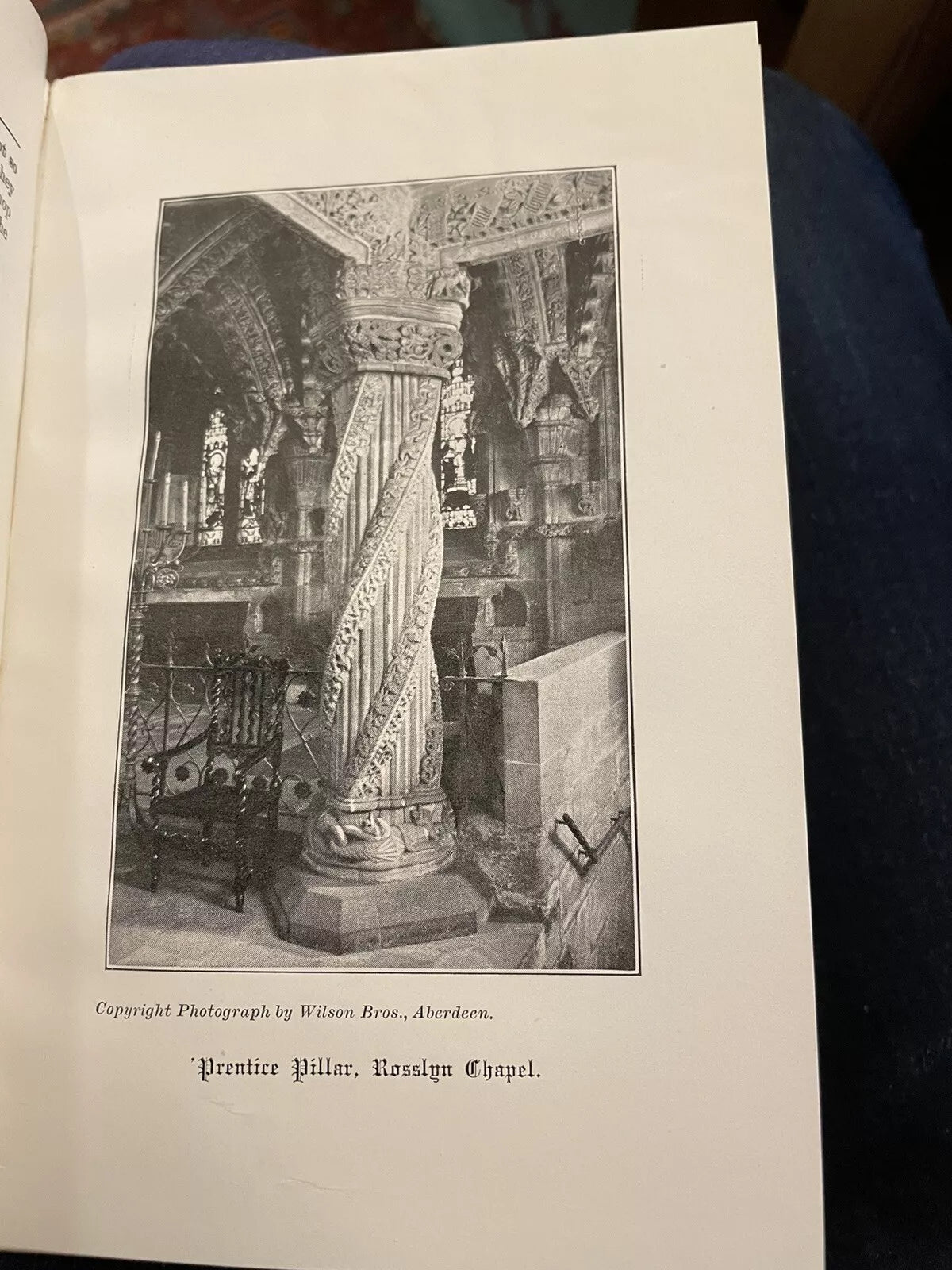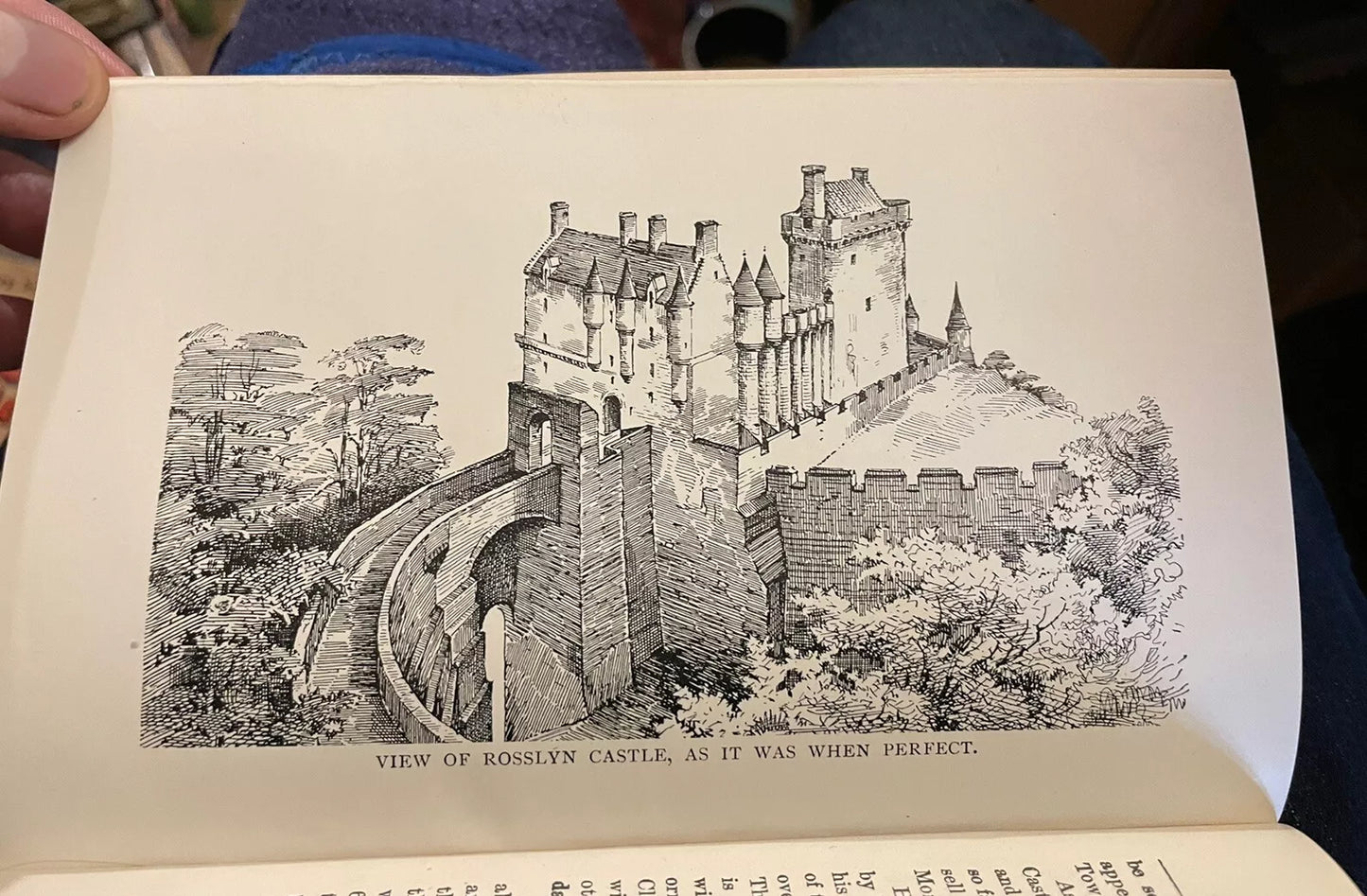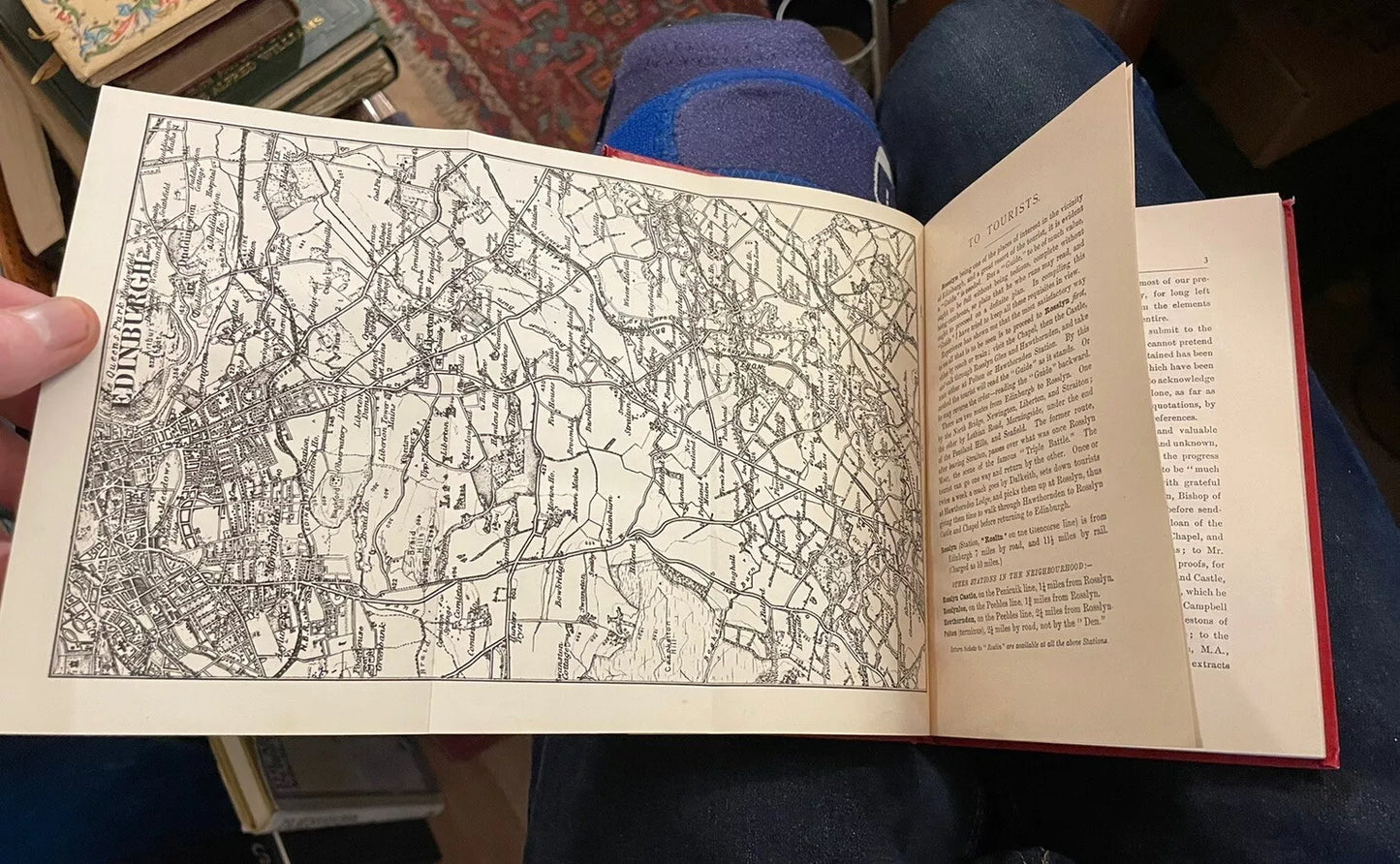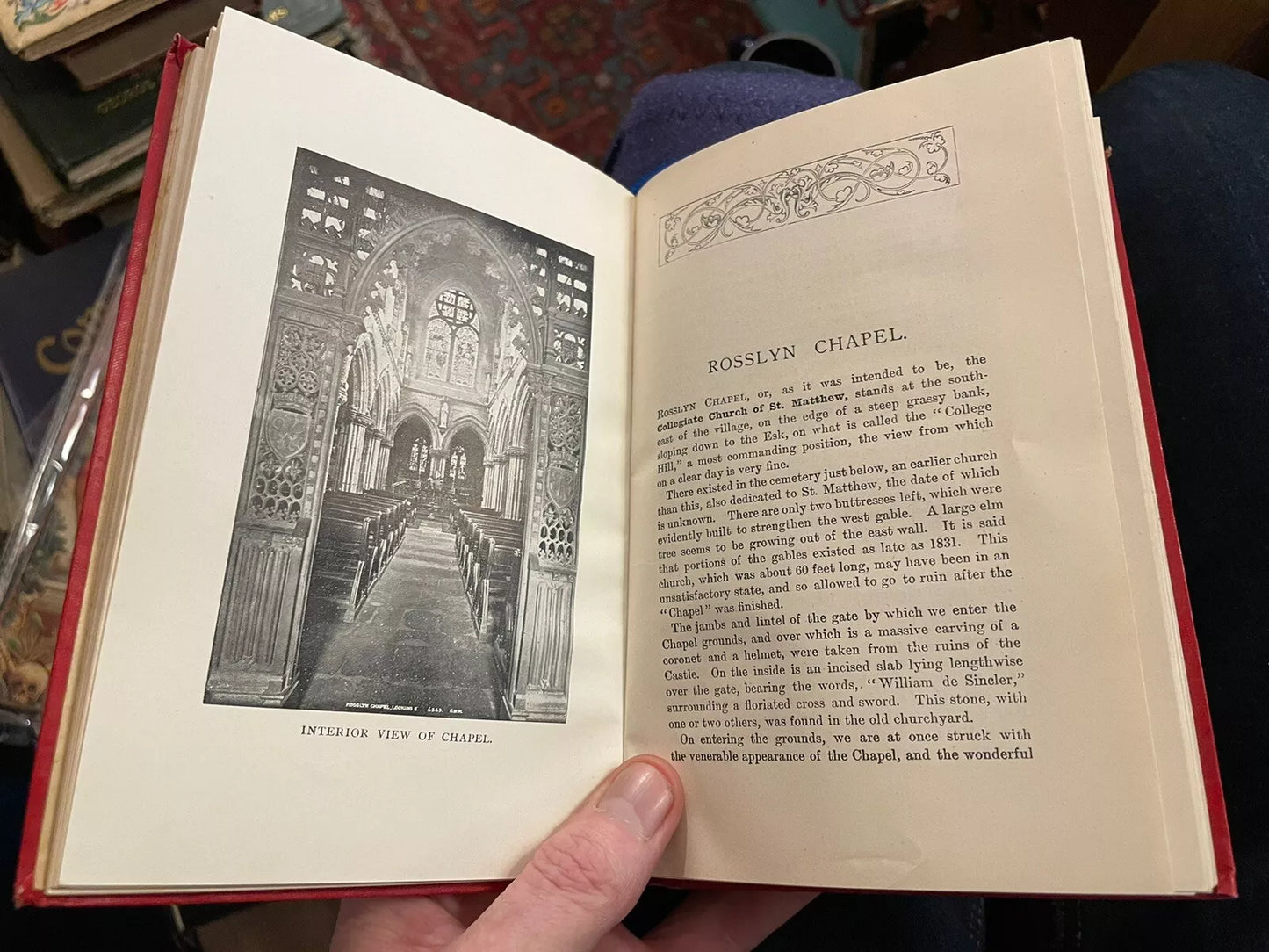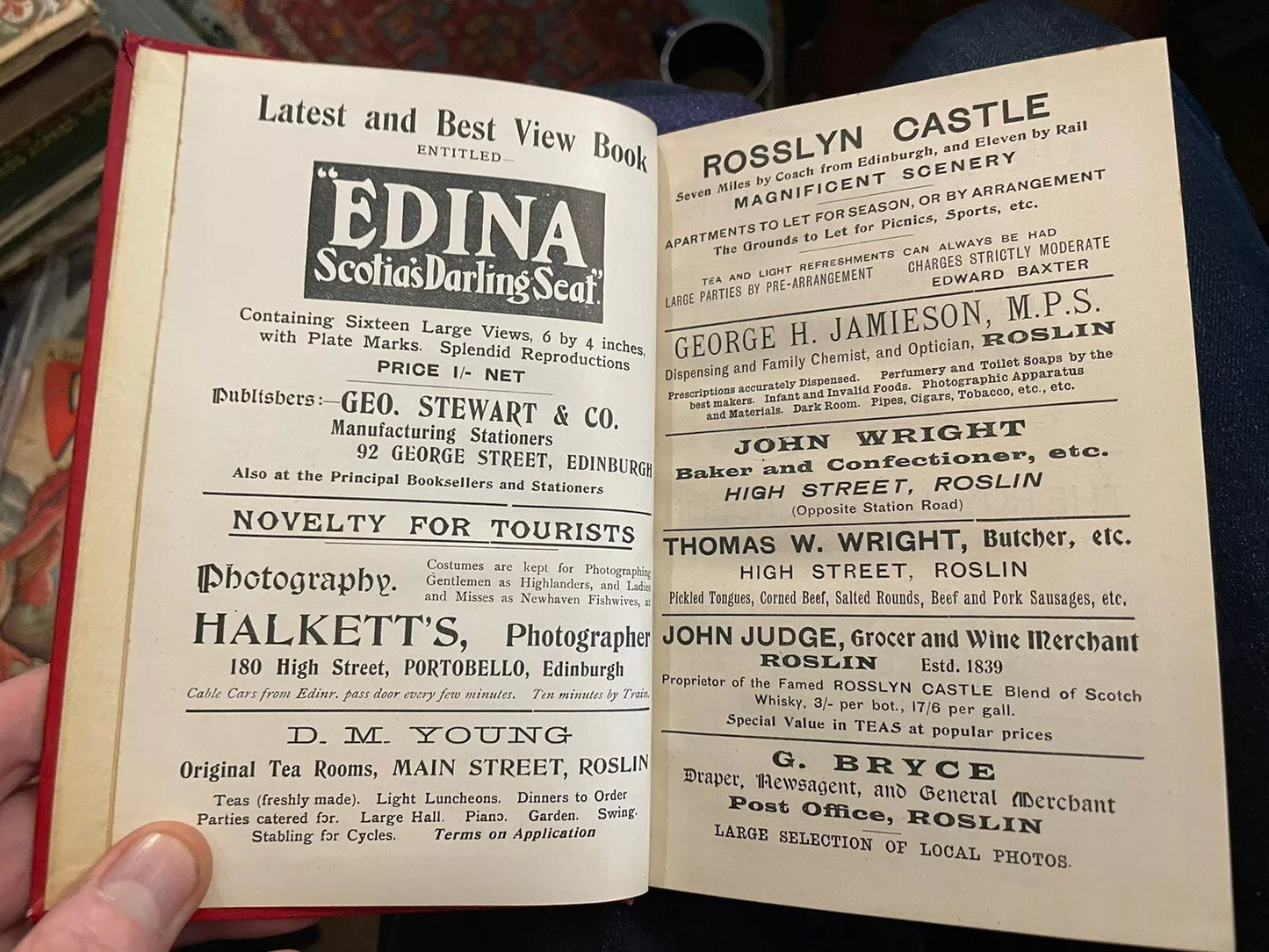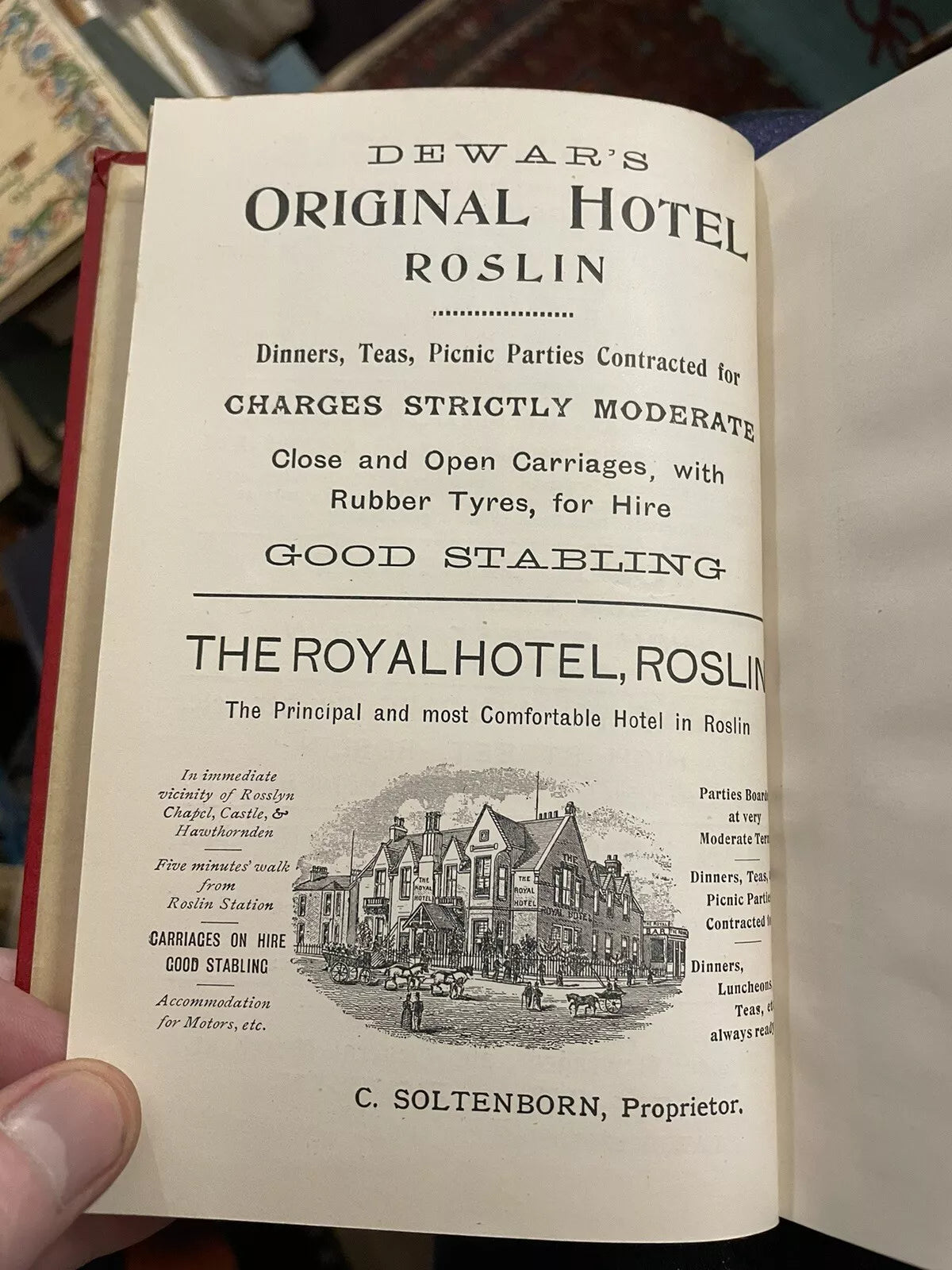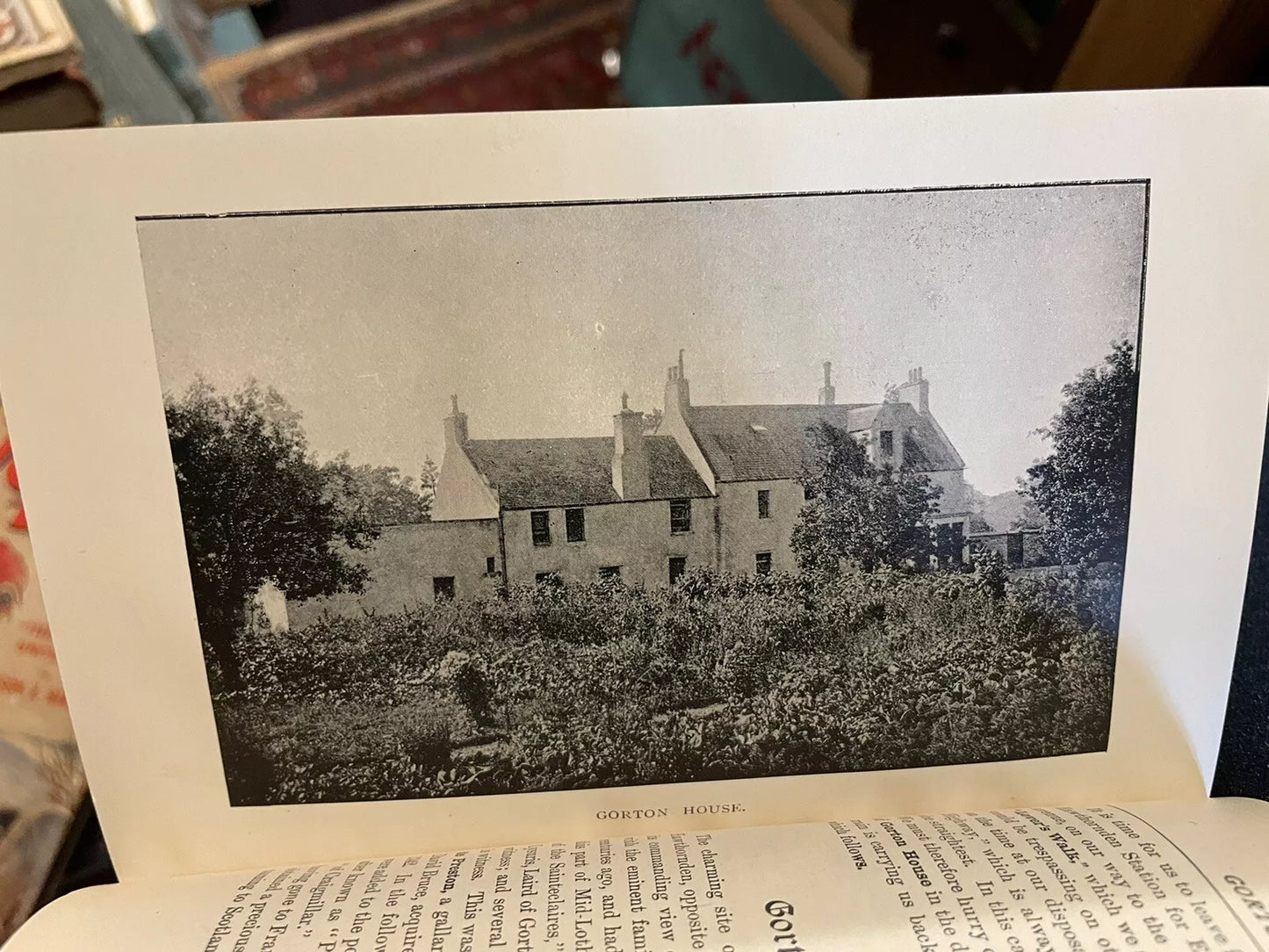The Gently Mad Book Shop
Illustrated Guide to Rosslyn Chapel & Castle, Hawthornden : Sinclair Family 1908
Illustrated Guide to Rosslyn Chapel & Castle, Hawthornden : Sinclair Family 1908
Couldn't load pickup availability
Illustrated Guide to Rosslyn Chapel & Castle, Hawthornden, etc
By the Rev John Thompson
With an inscription from the author to the front endpaper.
Edinburgh; MacNiven & Wallace, 1908. Seventh Edition. Hardback, 8vo, red cloth binding with gilt titles, bevel-edged boards, 126 pages. Profusely illustrated and with a fold out map. Inscribed by the author.
CONDITION
A very good copy. The cloth binding is very good. Hinges secure with no cracking. Endpapers very good. All contents present and pages in very good clean condition throughout. Overall a fine copy of this scarce guide.
Rosslyn Chapel, formerly known as the Collegiate Chapel of Saint Matthew, is a 15th-century Episcopal chapel located in the village of Roslin in Midlothian, Scotland.
The chapel is dedicated to Saint Matthew the Evangelist and was founded on a small hill above Roslin Glen as a collegiate church (with between four and six ordained canons and two boy choristers) in the mid-15th century. The chapel was founded by William Sinclair, 1st Earl of Caithness of the Scoto-Norman Sinclair family. Rosslyn Chapel is the third Sinclair place of worship at Roslin, the first being in Roslin Castle and the second (whose crumbling buttresses can still be seen today) in what is now Roslin Cemetery.
The chapel has been a burial place for several generations of the Sinclairs; a crypt was once accessible from a descending stair at the rear of the chapel. This crypt has been sealed shut for many years, which may explain the recurrent legends that it is merely a front to a more extensive subterranean vault containing (variously) the mummified head of Jesus Christ, the Holy Grail, the treasure of the Templars, or the original crown jewels of Scotland
The chapel became the subject of speculation regarding its supposed connection with the Knights Templar or Freemasonry beginning in the 1980s. This part of its history was referenced in the DC Comics storyline Batman: Scottish Connection, in which the hero Batman becomes caught up in an old vendetta between two Scottish clans during a visit to Scotland, this mystery including the discovery of an ancient treasure trove hidden in Rosslyn.
The topic entered mainstream pop culture with Dan Brown's The Da Vinci Code (2003), reinforced by the subsequent film of the same name (2006). Numerous books were published after 2003 to cater to the popular interest in supposed connections between Rosslyn Chapel, Freemasonry, the Templars and the Holy Grail generated by Brown's novel.
(Loc : Glass cabinet 4)
Share with someone
